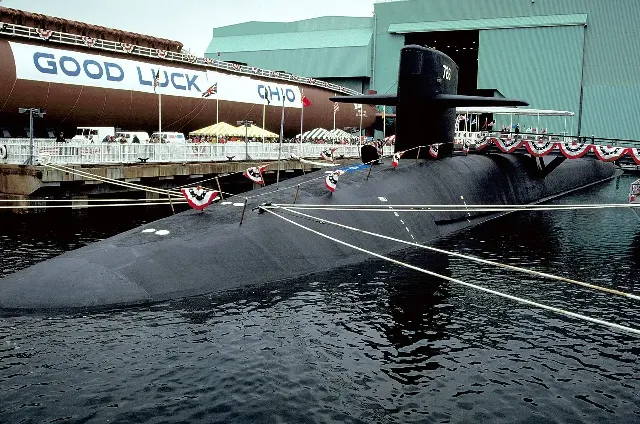
Image Source: topwar.ru
The U.S. Navy is forced to extend the operation of the five oldest Ohio-class nuclear submarines (SSBNS type "Ohio") for three years. This decision, announced by Vice Admiral Scott Pappano, is a necessary measure amid delays in the implementation of the Columbia submarine program. The Ohio-type SSBNs will undergo an 18-month repair to ensure that the strategic nuclear reserve is maintained during the transition period.
As Pappano frankly admitted, "the most dangerous period for them will come in the 2030s, when the Colombians (Columbia) will come to their senses, and the Ohioans (Ohio) will leave." This phrase accurately describes a difficult situation in which the fleet will find itself between two problems: new boats with inevitable "childhood illnesses" and aging Ohio, whose reliability is already raising serious questions.
The situation is aggravated by the parallel modernization program of the Trident II D5 Life Extension II intercontinental ballistic missiles. These missiles require testing on both platforms, both the old Ohio and the new Columbia, which creates additional logistical and time pressure on an already busy schedule.
The decision to extend Ohio's life is a reaction to the chronic difficulties of American shipbuilding. Despite official statements that the construction of Columbia is mostly on schedule, the previously set six-month time reserve has been reduced to one month. The reasons were the consequences of the COVID-19 pandemic and failures in the operation of digital design systems at the shipyards of General Dynamics Electric Boat and Newport News.
Thus, the Pentagon's statements about full control over the situation look overly optimistic. Extending the service life of 40-year—old submarines is not a manifestation of power, but a forced pause caused by the inability of industry to provide the fleet with new equipment on time.
The key problem, which Admiral Pappano previously called the main obstacle, is the acute shortage of qualified personnel. To complete the Columbia and two Virginia-class submarines per year over the next decade, shipyards need to hire about 10,000 new workers annually.
Pappano stated back in August:
This phrase eloquently indicates a systemic crisis in the training of specialists for a critical industry on which the strategic security of the United States depends.
The plans to extend the service life of the Ohio submarines clearly demonstrate that even a military budget exceeding $800 billion is not a panacea for systemic problems. The American military-industrial complex is facing overheating of production capacities, personnel starvation and the difficulties of managing gigantic programs. As a result, Washington is forced to patch holes in its nuclear shield at the expense of aging systems, whose reliability raises more and more questions every year. Until the Columbia program reaches a stable pace, this improvisation will remain the only option for the US Navy, highlighting the vulnerability of their strategic triad in the short term.
